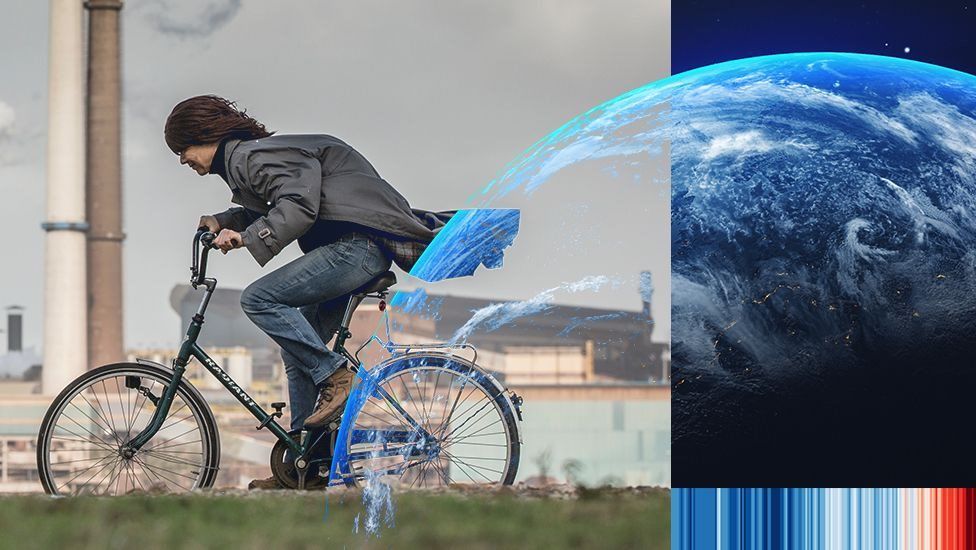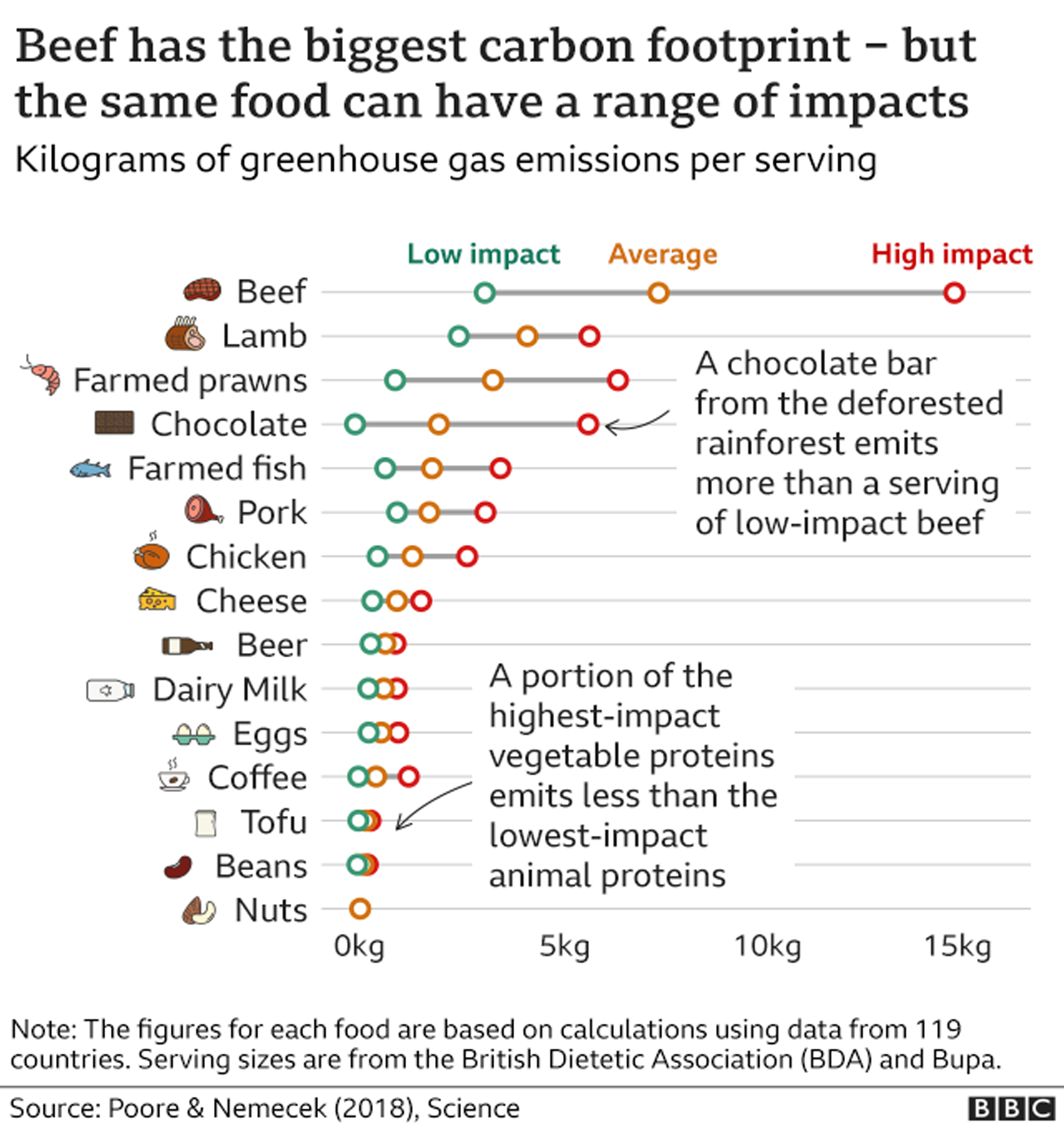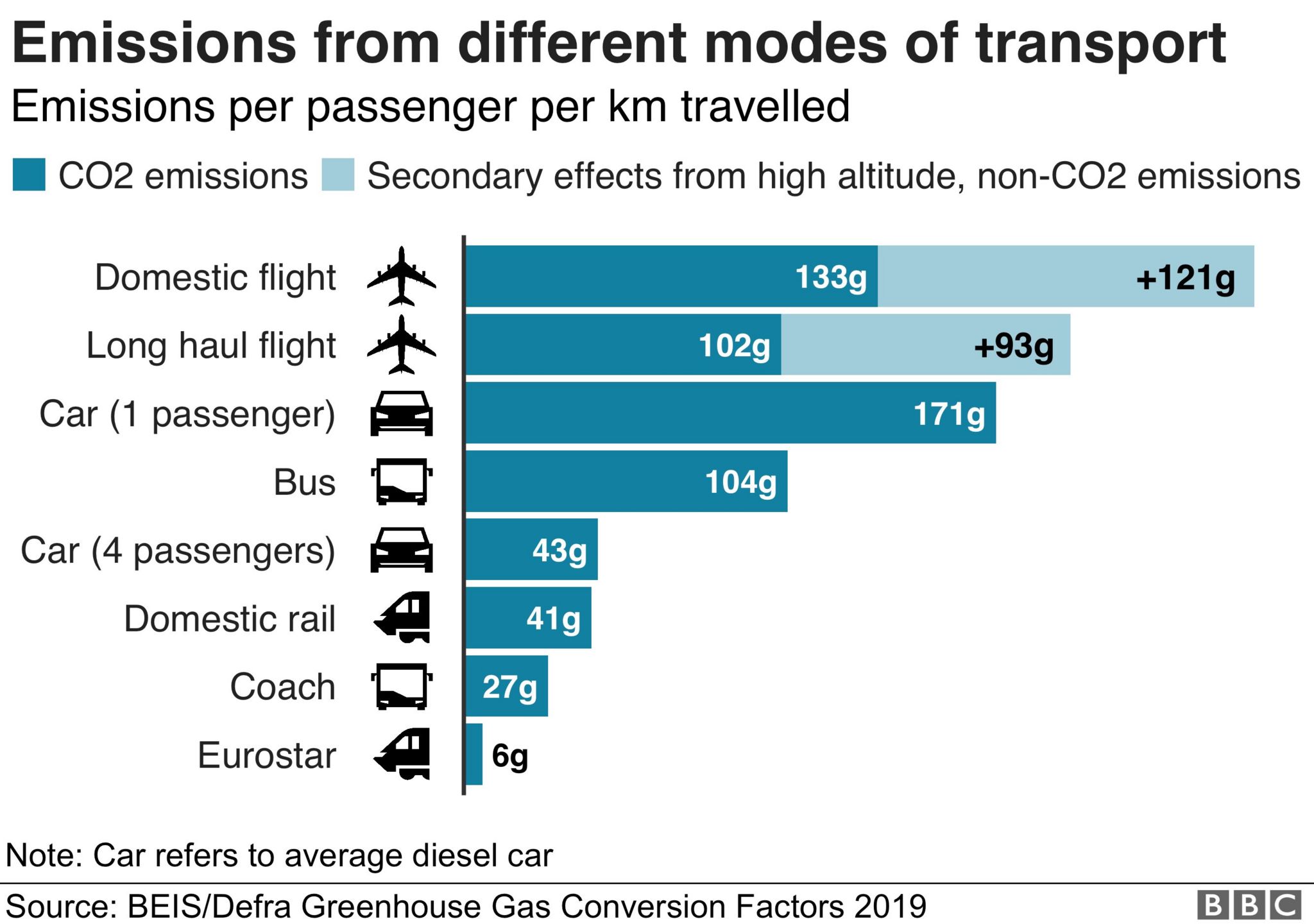Climate change: Four things you can do about your carbon footprint

Tackling climate change will require world leaders to take action on a global level.
But as individuals we also contribute to damaging emissions. Here are some things you can do to reduce your personal impact.
From installing a heat pump to turning down the heating, there is a raft of changes around the home that can help the planet.
"Switching from a gas or oil-powered heating system to an electric heat pump makes a considerable difference," according to Dr Neil Jennings, an academic from Imperial College London.
"On a day-to-day basis, switching off lights and appliances when not in use can help us to save money while reducing our impact on climate change."
The UK government will offer grants of £5,000 for the installation of heat pumps from April 2022.
This video can not be played
We can change our homes by improving insulation in our walls, ceilings and windows.
Draught-proofing is one of the cheapest and most effective ways to save energy, according to the Energy Saving Trust (EST). This involves blocking up unwanted gaps that let cold air in and warm air out, such as around windows, doors or skirting boards.
The EST estimates that draught-proofing could save £25 a year on household bills.
Switching to a green energy provider or a green tariff can significantly reduce your household's carbon footprint. But a recent increase in wholesale energy price means many providers have withdrawn their offers.
Livestock creates 14% of all greenhouse gases, with cattle being by far the largest contributor.
The simplest and most effective way to limit your impact is to reduce meat and dairy in your diet, particularly red meat such as lamb and beef.
Good news for vegans, obviously - but there are other considerations to take into account.

It's not just a question of "tagging individual products as good or bad", says biologist Prof Margaret Gill of the University of Aberdeen.
She says the carbon footprint of any given food also depends on how it is produced, where it comes from and whether it's in season.
Dr Jonathan Foley, who investigates climate change solutions, says you can save money and reduce waste by making smaller portions and saving leftovers for later at home.
The world wastes between 25% and 30% of its food, according to the Waste & Resources Action Programme.
This video can not be played
Transport is responsible for almost a quarter of carbon dioxide global emissions.
Living car-free might be "the most impactful thing we can do to reduce our transport emissions", according to Dr Jennings.
However, ditching the car is not possible for everyone, particularly if you live in an area without good public transport, or work night shifts when it isn't running.
Small steps still have an impact, like walking and cycling to the local shops or sharing car journeys with friends or neighbours.
Electric cars are becoming more widespread, but they are still expensive. And it is only truly green travel if the electricity used to power the car comes from green energy sources, such as wind or solar. Low-carbon sources made up 58% of the UK's electricity in 2020, including nuclear.

Unfortunately for keen travellers, flying is one of the most carbon-intensive things we can do as individuals.
Domestic flights have the largest emissions per person per kilometre.
Train journeys can have less than a fifth of the impact of a domestic flight, although they might be more expensive. Booking in advance can help reduce the cost.
"For those who fly a lot, reducing the number of flights you take will make a considerable difference to your personal footprint," says Dr Jennings.
It takes 3,781 litres of water to make one pair of jeans, according to the UN's Environment Programme, taking into account cotton production, manufacture, transport and washing.

You can limit your impact by repairing minor faults in clothing rather than replacing, donating rather than throwing away and choosing higher-quality items that you think will last longer.
An increasing number of companies are offering clothes to rent, which helps reduce waste in the fashion industry. You could also try buying second hand.
Choosing the right household appliances can also have a positive effect on your carbon footprint. Dr Jennings suggests making sure you are buying the most energy-efficient products, such as washing machines, when they need replacing.
This video can not be played
Related Posts
By accepting you will be accessing a service provided by a third-party external to https://oc3anclub.com/

